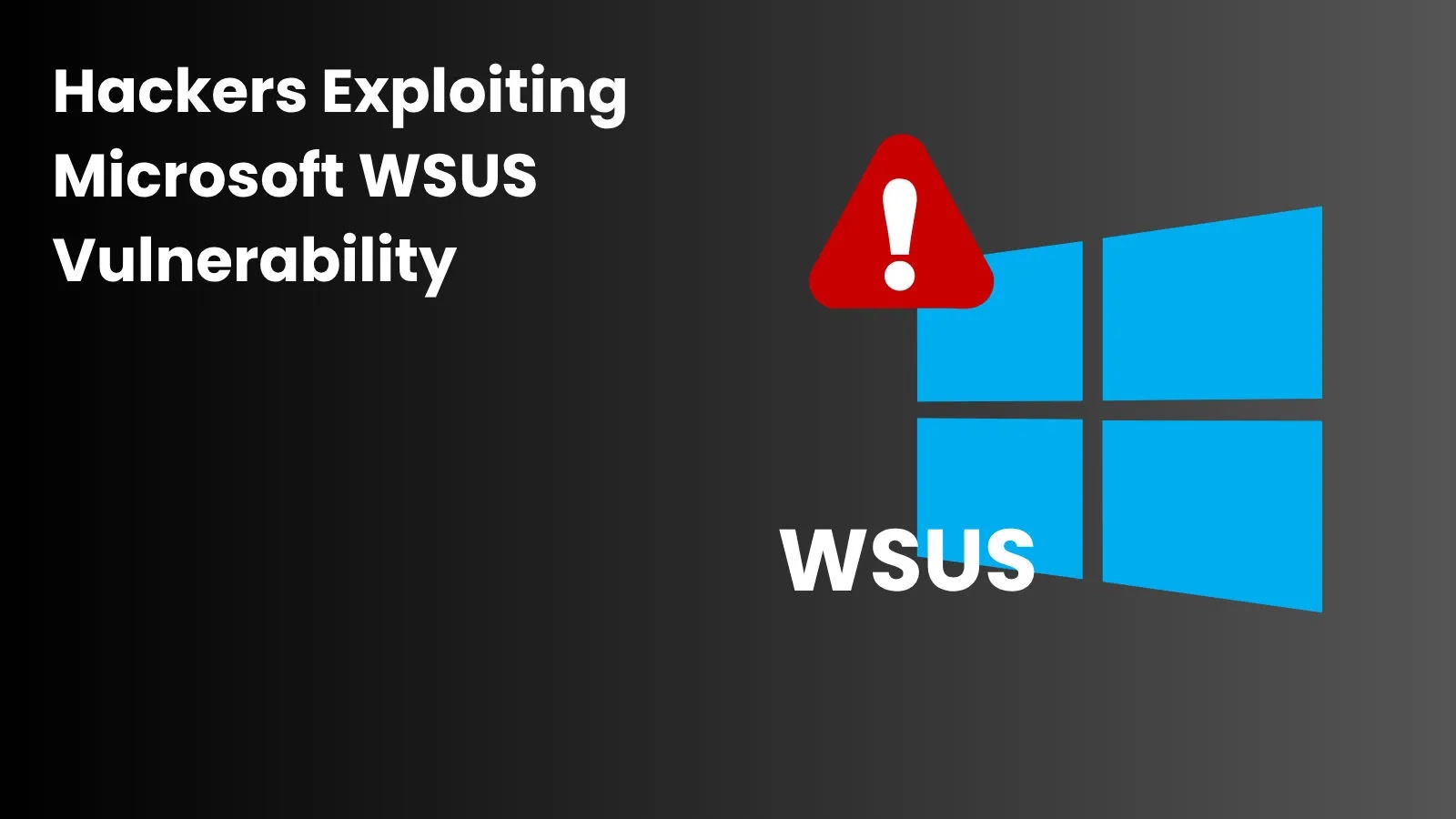
Hackers Exploiting Microsoft WSUS Vulnerability In The Wild – 2800 Instances Exposed Online
Urgent Alert: Hackers Actively Exploiting Microsoft WSUS Vulnerability – 2800 Instances Exposed
Enterprise networks are currently under significant threat. Security researchers have confirmed that malicious actors are actively exploiting a critical vulnerability within Microsoft’s Windows Server Update Services (WSUS) infrastructure. With an alarming 2,800 WSUS instances reportedly exposed online, organizations relying on this vital service are at severe risk of compromise. This widespread exploitation underscores the urgent need for immediate action and remediation.
Understanding the Threat: CVE-2025-59287
The vulnerability at the center of this active exploitation campaign is tracked as CVE-2025-59287. This specific flaw enables remote code execution (RCE) on unpatched WSUS servers. For an attacker, RCE is the holy grail, as it provides them with the ability to execute arbitrary commands on the affected server. In the context of WSUS, this can grant full control over the update server itself, and by extension, potentially the entire network it serves, as WSUS distributes updates to client machines.
The severity of this vulnerability cannot be overstated. A compromised WSUS server can become a launchpad for further attacks within an organization’s internal network, allowing threat actors to:
- Distribute malicious updates to client machines.
- Install ransomware or other malware across the network.
- Exfiltrate sensitive data.
- Establish persistent access.
The Scope of Exposure: 2800 Instances Identified
Monitoring firms analyzing global scan data have identified approximately 2,800 instances of WSUS servers exposed online as of October 27, 2025. This high number of accessible servers significantly broadens the attack surface for threat actors. While not all exposed servers are necessarily vulnerable or actively being exploited, their public accessibility drastically increases the risk. Attackers are constantly scanning the internet for such entry points, making these exposed WSUS servers prime targets.
The ease with which these servers can be discovered using publicly available scanning tools further amplifies the danger. Organizations must recognize that any internet-facing WSUS server without proper security hardening and consistent patching presents an unacceptable level of risk.
Remediation Actions: Securing Your WSUS Servers
Addressing CVE-2025-59287 and securing your WSUS infrastructure requires immediate and decisive action. Organizations must prioritize these steps to mitigate the risk of compromise:
- Patch Immediately: Apply all available security updates and patches from Microsoft for WSUS. Continuously monitor Microsoft’s security advisories for updates related to this or other critical vulnerabilities.
- Isolate WSUS Servers: If possible, restrict direct internet access to your WSUS servers. Implement proper network segmentation, placing WSUS servers in a demilitarized zone (DMZ) or a dedicated management network with strict firewall rules.
- Least Privilege Principle: Ensure that the WSUS service and its underlying components run with the minimum necessary privileges.
- Strong Authentication: Enforce strong authentication mechanisms for accessing the WSUS console and any related management interfaces.
- Regular Auditing and Monitoring: Implement continuous monitoring of WSUS server logs for suspicious activity, unusual update distributions, or unauthorized access attempts.
- Review Public Exposure: Use vulnerability scanners or Shodan-like services to determine if your WSUS servers are unintentionally exposed to the internet. If so, immediately implement network access restrictions.
- Endpoint Detection and Response (EDR): Deploy and properly configure EDR solutions on your WSUS servers and client machines to detect and respond to post-exploitation activities.
Recommended Tools for Detection and Mitigation
Leveraging appropriate tools is crucial for identifying exposure and managing WSUS security. Here are some categories of tools that can assist:
| Tool Category / Name | Purpose | Link (Example) |
|---|---|---|
| Vulnerability Scanners (e.g., Nessus, OpenVAS) | Identify known vulnerabilities, including exposed services and misconfigurations on WSUS servers. | Tenable Nessus |
| Network Intrusion Detection/Prevention Systems (NIDS/NIPS) | Monitor network traffic for suspicious patterns, attempted exploits, and anomalous behavior. | Snort |
| Endpoint Detection and Response (EDR) Solutions | Detect and respond to threats on the WSUS server itself, including malicious execution and privilege escalation. | CrowdStrike Falcon |
| Firewall Management Tools | Configure and enforce granular network access policies to restrict WSUS server exposure. | Palo Alto Networks Next-Gen Firewall |
| WSUS Server Diagnostics Tool | Built-in Microsoft tools to check the health and configuration of your WSUS environment. | (Integrated with Windows Server) |
| Security Information and Event Management (SIEM) | Aggregate and analyze logs from WSUS servers, firewalls, and other systems for threat detection. | Splunk |
Conclusion
The active exploitation of CVE-2025-59287 in Microsoft WSUS servers presents an immediate and significant threat to organizations globally. The reported 2,800 exposed instances highlight a critical attack vector that sophisticated adversaries are actively leveraging. Timely patching, robust network segmentation, and continuous security monitoring are not merely best practices but critical imperatives. Organizations must act now to identify and remediate vulnerable WSUS servers to prevent potentially devastating breaches.





